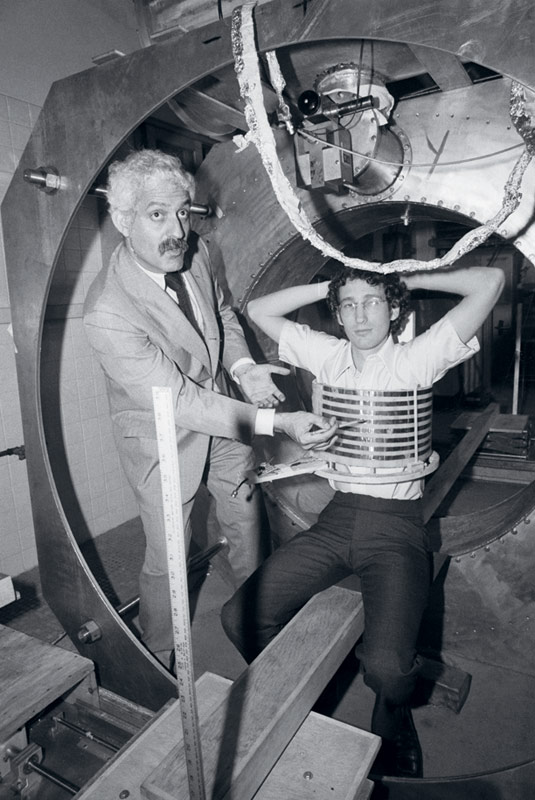Raymond V. Damadian, an Armenian who was born in Forest Hills, New York in 1936, is considered to be the father of the Magnetic Resonance (MR) scanning machine.
He studied violin at the Julliard School of Music in New York for eight years before winning a scholarship, at age 16, to the University of Wisconsin. There he received a BS degree in mathematics in 1956 and then turned to medicine, earning an MD in 1960 from the Albert Einstein College of Medicine (Bronx, NY).
NMR, the phenomenon of atomic nuclei emitting radio waves at predictable frequencies when exposed to a powerful magnetic field, had been used during and after World War II to probe the composition of various substances. Damadian invented an apparatus and method to use NMR safely and accurately to scan the human body, a method now well known as magnetic resonance imaging (MRI). The first MRI scan provided a clear image of the heart, lungs and chest wall with no side effects.
Today, MRI scanners can instantly map and analyze any part of the human body in minute detail, allowing visual diagnosis of virtually any medical condition, from strained muscles to tumors. They can also provide the chemical composition of the tissue being scanned.
In 1978, Damadian formed a company, FONAR Corporation (from “Field fOcused Nuclear mAgnetic Resonance”), which produced the first commercial scanner in 1980. Dr. Damadian is a recipient of the National Medal of Technology and the Lemelson-MIT Lifetime Achievement Award, to name two in a long list of awards, and was inducted into the National Inventors Hall of Fame in 1989. He is a member of the Biophysical Society, American Association for the Advancement of Science, International Society for Magnetic Resonance in Medicine, and the Society for Medical Innovation and Technology.

